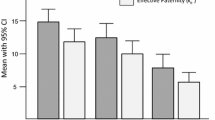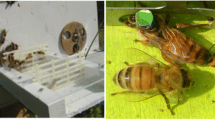Summary:
Mating frequencies in two related honeybee subspecies Apis mellifera monticola and A. m. scutellata were compared using a set of five microsatellite loci in order to discriminate among the major factors which have affected the evolution of extreme polyandry. We found that the queens of eight A.m. monticola colonies collected from an apiary in Malawi, mated 5-19 times producing an average relatedness among workers of 0.328 ± 0.049. The six A.m. scutellata colonies collected from an apiary in South Africa displayed a significantly larger degree of polyandry, i.e. queens mated 10-25 times and the genetic relatedness among nestmates was 0.283 ± 0.020. The difference in the degree of polyandry observed between the populations suggests that socially based selective pressures are not of primary importance in the evolution of extreme polyandry but that ecological selective pressures play a more significant role. However, exploring the relative contributions of these factors to the variation in levels of polyandry will require the use of colonies in which the level of polyandry is experimentally controlled.
Similar content being viewed by others
Author information
Authors and Affiliations
Additional information
Received 17 February 2000; revised 4 July 2000; accepted 9 August 2000.
Rights and permissions
About this article
Cite this article
Franck, P., Koeniger, N., Lahner, G. et al. Evolution of extreme polyandry: an estimate of mating frequency in two African honeybee subspecies, Apis mellifera monticola and A.m. scutellata. Insectes soc. 47, 364–370 (2000). https://doi.org/10.1007/PL00001732
Issue Date:
DOI: https://doi.org/10.1007/PL00001732




